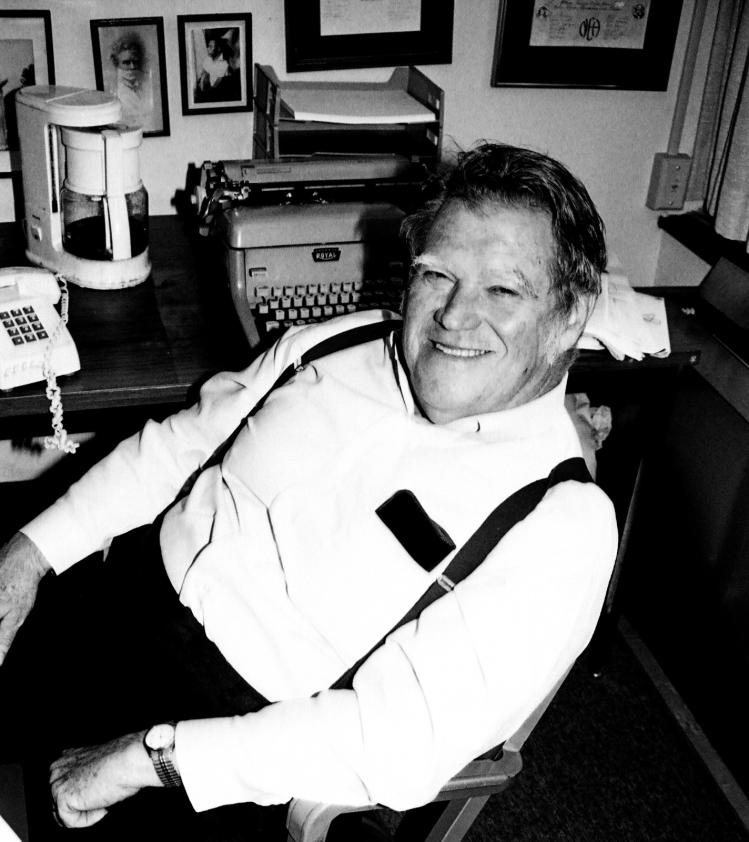
The statistics would be shocking if their impact were not dulled by repetition. Record drug-overdose deaths. Mounting crime, much of it committed by minors. Falling life expectancy. Proliferating reports of depression, anxiety, and other psychological distress.
What’s wrong with us? Many explanations have been proposed, including straitened economic prospects, the provocations of social media, and the disruptions of school, work, and civic life linked to the COVID-19 pandemic. But these are relatively recent causes. What if the sources of our discontent are woven into the very fabric of American life? In that case, it’s not enough to increase wages and employment, provide more effective services, and restore routines. We need to rethink who we are—and what we owe one another.
In The Idea of Fraternity in America, first published half a century ago this year and recently reissued by the University of Notre Dame Press, the political theorist and frequent Commonweal contributor Wilson Carey McWilliams makes the case that something important is missing from the central American institutions and—more importantly—from the mainstream of American culture. He calls it “fraternity,” but he means something different from the biological relations that this term implies. Rather than the brute fact of kinship, McWilliams is talking about the elusive connection that allows men to call each other “brother”—even if they’re meeting for the first time.
The Idea of Fraternity is a kind of book that doesn’t get published anymore. It is big, sprawling, and raucous, like the country it holds up for examination. Some of its sections and chapters are brilliant. The whole, however, is nearly indigestible. More than six hundred pages, discounting the ample notes, McWilliams’s book ranges through sociological theory, theology, social history, and political commentary. It’s still not enough space.
Although it won a prize from the National Historical Society, The Idea of Fraternity was not universally well received on initial publication. Scholars objected to the impressionistic qualities of McWilliams’s argument and to his reliance on literary sources rather than empirical methods. Popular critics, including William F. Buckley Jr., questioned whether the predicament was really so dire and widespread as McWilliams claimed. By McWilliams’s own account, the book was inspired by an observation that “Americans, especially young Americans, cannot find their country in the land about them.” But haven’t the young—and especially the college students among whom McWilliams spent his professional life—always been rather discontented?
Fifty years later, it’s easier to see the book’s merits and to forgive its flaws. The Idea of Fraternity was an early expression of the challenge to liberal individualism, voluntarism, and acquisitiveness that has since become a familiar, even dominant, genre of American social criticism. At that time, the genre was associated with the New Left—and it’s worth noting that the book emerged from a doctoral dissertation composed in the mid-1960s at Berkeley, where McWilliams was active in the student movement. Since then, this genre has become more common on the Right.
This trajectory is the result of personal influence as well as shifting political affinities. Elements of McWilliams’s analysis have been adapted and popularized by Patrick Deneen, a leading “postliberal” theorist who studied with McWilliams as a graduate student and has been a champion of his work. But the underlying reason that McWilliams now reads as an idiosyncratic conservative is his insistence that biblical religion is an essential, though not exclusive, source and support for American fraternity. Think again of settings where men are likely to call each other “brother”—and to mean it as something more than a friendly mode of address. They include the military, organized labor, and church.
McWilliams’s diagnosis goes something like this. From the beginnings of British settlement, American life was characterized by two conflicting moral visions. One, which became increasingly dominant over the centuries, was liberal or “Lockean.” This was not because Americans had necessarily read or even heard of John Locke. Rather, it was because they saw themselves primarily as free agents, seeking their own interest on their own terms. These assumptions did not entail anarchism: political institutions were understood as necessary to secure rights to life, liberty, and the pursuit of happiness. But these institutions were ultimately instrumental and subordinate to individual choices.
The other vision is more difficult to express in terms of general propositions—and McWilliams struggles to do so in the early chapters. Basically, it involves a bond of interpersonal affection, rather than mutual interest, one that is oriented toward purposes higher than material comfort or even physical survival. This bond is more evident when those it binds are not biologically related and therefore implicated in a quasi-Darwinian struggle for genetic continuity.
McWilliams locates one example of fraternity, so understood, in the classical polis. But he finds its highest expression in biblical accounts of covenant because they depend on voluntary commitment to God and each other, rather than on accidents of birth. To McWilliams, this combination of choice and transcendence distinguishes fraternity from the classical sociological opposition between Gesellschaft and Gemeinschaft, which he links to the “automatic unity” of blood. Indeed, it is a recurring tendency of fraternity to degenerate into mere kinship.
This essentially religious understanding of fraternity informs McWilliams’s interpretation of American history. Like Tocqueville, he takes Puritan New England as America’s “point of departure” from European precursors. Although he began his academic career at Berkeley and hailed from a prominent Western family (his father was the lawyer and journalist Carey McWilliams), McWilliams rejects Frederick Jackson Turner’s famous assertion that American character was defined by the frontier. The isolation, mobility, and self-reliance associated with frontier life encouraged “Lockean” characteristics at odds with the fraternal qualities McWilliams treasured.
Yet Puritan fraternity was evanescent even in its own time and place. On the one hand, the demands of religious community were hard to sustain across generations. Like the biblical Israelites, the original Puritans made an agonizing decision to undertake their errand into the wilderness. Their descendants, born in the New World, had no choice in the matter. By the middle of the seventeenth century, this generational change brought alterations in the political constitution of the New England colonies. While full participation had once depended on an adult commitment to the church, the so-called Half-Way Covenant extended civil privileges to those who had been baptized as infants. Brotherhood tended to degenerate into Gemeinschaft.
On the other hand, emphasis on the necessity of sincere belief could push in an individualistic direction. Roger Williams appears in The Idea of Fraternity as something of a villain because he contended that the demands of conscience trumped communal obligation. The result, according to McWilliams, was to lower the aspirations of politics from the achievement of righteousness under God to security of person and property—a task, Williams suggested, that could be accomplished equally or better by “infidel cities” than by Christian governments.
A secular version of this idea ostensibly provided the basis for American national independence. The Declaration of Independence proclaims liberty and equality but says little about fraternity. McWilliams acknowledges that the rhetoric of fraternity played a larger role in the Philadelphia convention and The Federalist than in the paper Constitution. Still, he displays a sympathy for anti-Federalist criticisms of the new institutions as too big, too abstract, and too legalistic. He would develop these criticisms at greater length later in his career.
The targets of The Idea of Fraternity become more intellectualized as the argument moves into the nineteenth century. In brilliant chapters, McWilliams presents Melville and Hawthorne as spokesmen for the old ideal. Emerson and Whitman, by contrast, appear as esoteric liberals who appealed to the ideal of brotherhood in the abstract but feared the dependence and obligation demanded by real fraternity. McWilliams’s preference for Melville’s and Hawthorne’s tales of American madness and doom reflects his own taste for narratives of decline from noble origins. One reason contemporary scholars found The Idea of Fraternity hard to swallow is that they recognized it as a jeremiad in the Puritan tradition. The purpose of this genre is less to inform its audience, although it may do that, than to humble them as a precondition of repentance. This is a common technique of the preacher, but less usual among university professors constrained by Weberian norms of objective scholarship. Part of McWilliams’s legendary ability as a classroom teacher surely lay in his ability to play both roles.
Yet McWilliams’s charismatic success in inspiring students points toward certain limits of his conception of fraternity and its application to practical politics. In the early theoretical chapters, McWilliams stipulates that fraternity is “based on intense interpersonal affection” and therefore “limited in the number of persons and in the social space to which it can be extended.” The criteria can perhaps be met by very small communities. But Aristotle estimated that the boundaries of a polis committed to the common good might lie between five thousand and one hundred thousand inhabitants (of whom only free adult males would be participating citizens). What measure of fraternity can we reasonably expect at the scale of the modern nation-state—let alone the continental republic that the United States had become, for better or worse, by the middle of the nineteenth century?
The later chapters of The Idea of Fraternity are haunted by this question but never really confront it directly. Instead, McWilliams offers snapshots of institutions and movements that kept the embers of fraternity burning, including the original Populists and Knights of Labor and immigrant churches. Even when it was not their conscious intention, such groups helped traditional culture stay alive in an increasingly anonymous and commercial country. Yet McWilliams admits that they were more like protests against modern liberalism than viable alternatives to it. Fraternity, in this sense, turns out to be beautiful but evanescent, rather than the basis for an enduring order.
By contrast, McWilliams is dismissive of fraternal clubs, lodges, and ethnic societies that were more widespread and achieved greater institutional stability. The reason for this relative success, McWilliams suggests, is that these were ultimately Lockean voluntary societies for the pursuit of overlapping interests. They did not challenge American expectations. Sinclair Lewis appears as another literary avatar of the idea of fraternity for his satire of George Babbitt as a “bonehead Walt Whitman” (the description is borrowed from Rebecca West).
Although presented as a critique of romantic illusion, McWilliams’s enlistment in the war on Babbittry expresses the romantic character of his own thought. He’s not very excited about the ordinary aspirations of ordinary people, which may involve some measure of fraternity but also include boring interests in stability and prosperity. Prophets, rebels, and losers are more beautiful and appealing.
This suspicion of bourgeois normalcy may help explain McWilliams’s sympathy—surprising all these years later but fashionable when the book was published—for the Black Power movement. “No group has raised fraternity to a higher status, or been more rigorous in demanding it, than the Black Panthers,” he writes. They were able to recreate the “battle fraternity” that veterans’ organizations only memorialize.
McWilliams was not blind to the risks that arise when battle fraternities emerge on the home front. In addition to the threat to democratic politics, McWilliams notes the sexual risks of violent men claiming what they believe to be theirs. But this is a rare discussion of a tension that seems unavoidable now. If this book were being written today, it would not be possible to avoid more reflection on the potentially exclusionary implications of “the idea of fraternity” for women.
Yet this oversight, not uncommon in its time, is tempered by the generosity and hope that pervade The Idea of Fraternity. If he was wrong about the Panthers, McWilliams was right that African American thought belongs in the political-theory canon—and he made pioneering efforts to place it there. McWilliams also made clear that his quarrel with America was inspired by sincere patriotism. As in the biblical tradition he treasured, McWilliams’s prophetic criticism is not simply condemnation. Instead, it aims to use criticism as a spur to revival. While McWilliams saw electoral politics and legislation as part of this process, he did not imagine that it could be accomplished by dramatic “regime change.” For if fraternity does not live in the hearts of men, it cannot be imposed by the laws of the land.
The Idea of Fraternity in America
Wilson Carey McWilliams
University of Notre Dame Press
$50 | 732 pp.
Please email comments to [email protected] and join the conversation on our Facebook page.
Previous Story
AI & Personhood
Next Story
A No-Nonsense Thérèse


